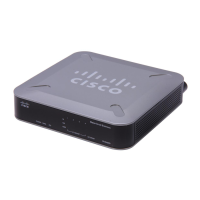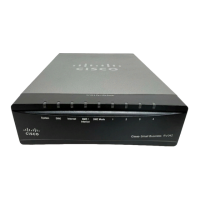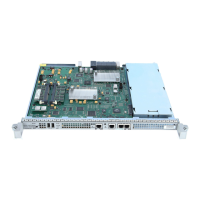4-6
Cisco PNNI Network Planning Guide for MGX and SES Products, Release 5
Part Number OL-3847-01 Rev. D0, April, 2004
Chapter 4 Planning Intermediate Route Selection
How MGX and SES Nodes Select Links
Any route selected from the SPTs must conform to all specified metrics. If a conforming route is not
available in chosen SPT, on demand routing is used to find a conforming route.
On PXM1E cards and service modules, you can change this with the addcon command.
On-Demand Routing
When the SPTs cannot produce a route for a connection, the switch performs on-demand routing. A SPT
can fail to produce a route because the shortest route or routes in the table have failed. On-demand
routing is also required when a connection specifies multiple routing metrics and the SPT routes do not
conform to all of the metrics.
During on-demand routing, the switch searches the PNNI database for routes that match the specified
criteria. On demand routing takes more time than SPT routing. However, on-demand routing can access
more of the PNNI database and select better routes.
As a switch administrator, you can choose what action the controller takes when it discovers the first
acceptable on-demand route. You can configure the controller for first fit, which produces the fastest
route selection, or you can configure the switch for best fit. When the controller is configured for first
fit on-demand route selection, it selects the first route that satisfies all connection requirements. When
the controller is configured for best fit on-demand route selection, it identifies all routes that meet the
call requirements, and then it chooses the route based on the setting of the load balancing option.
Load Balancing for SPT and On-Demand Routing
The load balancing option, which applies to SPT routing and on-demand routing, is a configurable
parameter that allows you to control how a route is chosen when multiple routes offer the same level of
service. You can configure the load balancing option to choose randomly from multiple routes or choose
according to the best AvCR. If you select the random method, the PNNI controller considers the
conforming routes equal and balances the load by randomly assigning calls to each. If you choose the
route based on the AvCR, the route with the highest available cell rate is chosen.
How MGX and SES Nodes Select Links
The SPTs are built by calculating routes that are optimized for lowest AW, CTD, or CDV. However, for
most service classes, each link along a route must conform to additional parameters. If no route is found
in the SPTs, on-demand routing must be used to calculate a conforming route from the PNNI database.
The link parameter requirements for a service class establishes the quality of service (QoS) required for
a call. Table 4-3 shows the link parameters that must be satisfied for each service class.

